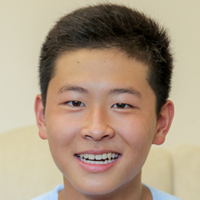Characterizing clinical variants of Alzheimer's disease
Problem: Neurologists make a diagnosis of Alzheimer’s disease based on clinical symptoms. Neuropathologists make a postmortem diagnosis of Alzheimer’s based on misfolded proteins, primarily beta-amyloid and tau. Sometimes, the clinical and neuropathologic diagnoses are different. For example, a patient with motor deficits may be diagnosed with corticobasal syndrome, but after autopsy, the neuropathologist could find evidence of Alzheimer’s disease.
Clinical relevance: Alzheimer’s is predominantly associated with memory loss, but when non-memory symptoms dominate, these atypical Alzheimer’s cases have been shown to significantly increase the likelihood of misdiagnosis. This may lead to Alzheimer’s patients receiving unnecessary and inappropriate medications. The molecular underpinnings contributing to Alzheimer’s disease “variants” (i.e. neuropathological Alzheimer’s with non-Alzheimer’s clinical presentations) remain unknown. Research characterizing these variants has direct implications for the accurate treatment of Alzheimer’s patients and the development of precise drug therapies.
Hypothesis: The orbitofrontal cortex in FTD-AD cases have a greater pathological beta-amyloid and tau burden than that of AD-AD cases
Work: This summer, at the Center for Neurodegenerative Diseases Research (CNDR), John Robinson, Dr. Trojanowski, and I began a pilot study examining the orbitofrontal cortex of patients with neuropathological Alzheimer’s disease cases but were clinically diagnosed with one of three forms of frontotemporal dementia. We used quantitative methods on QuPath, an image analysis software, to quantify the degree of beta-amyloid plaque and neurofibrillary tau tangle burden on brain tissue samples from 30 CNDR patients. Most of the summer was devoted to learning about and working with QuPath. The Penn Digital Neuropathology Lab served as an incredible resource for any of my QuPath questions. One of the highlights this summer was assisting during autopsies in the morgue and helping to retrieve the brain of a deceased CNDR patient. After preserving the brain in fixative, I paraffin-embedded, cut, immunostained, and digitally scanned the orbitofrontal cortex sections. I will continue working on this project this fall and am planning on expanding the study’s cohort size.
I’m grateful for JR and Dr. Trojanowski’s mentorship, and I want to thank CURF, the patients, families, and physicians who make this research possible.

Comments
This is very interesting and…
This is very interesting and seems you are addressing a significant problem. Would love to know the result of your study after you continue working on it.
Hey Nick, I thought your…
Hey Nick, I thought your video presentation was really interesting since I worked with a lot of patients this summer who have primary progressive aphasia. I can totally see how many patients are misdiagnosed or not diagnosed at all since there is a decent amount of subjectiveness that goes into characterizing and classifying aphasia and other dementia-related illnesses. Clinicians vary on how they assess patients and diagnoses are constantly changing. I also had a question about methodology; that is, what was the reasoning for selecting the brain regions that are included in the sampling?